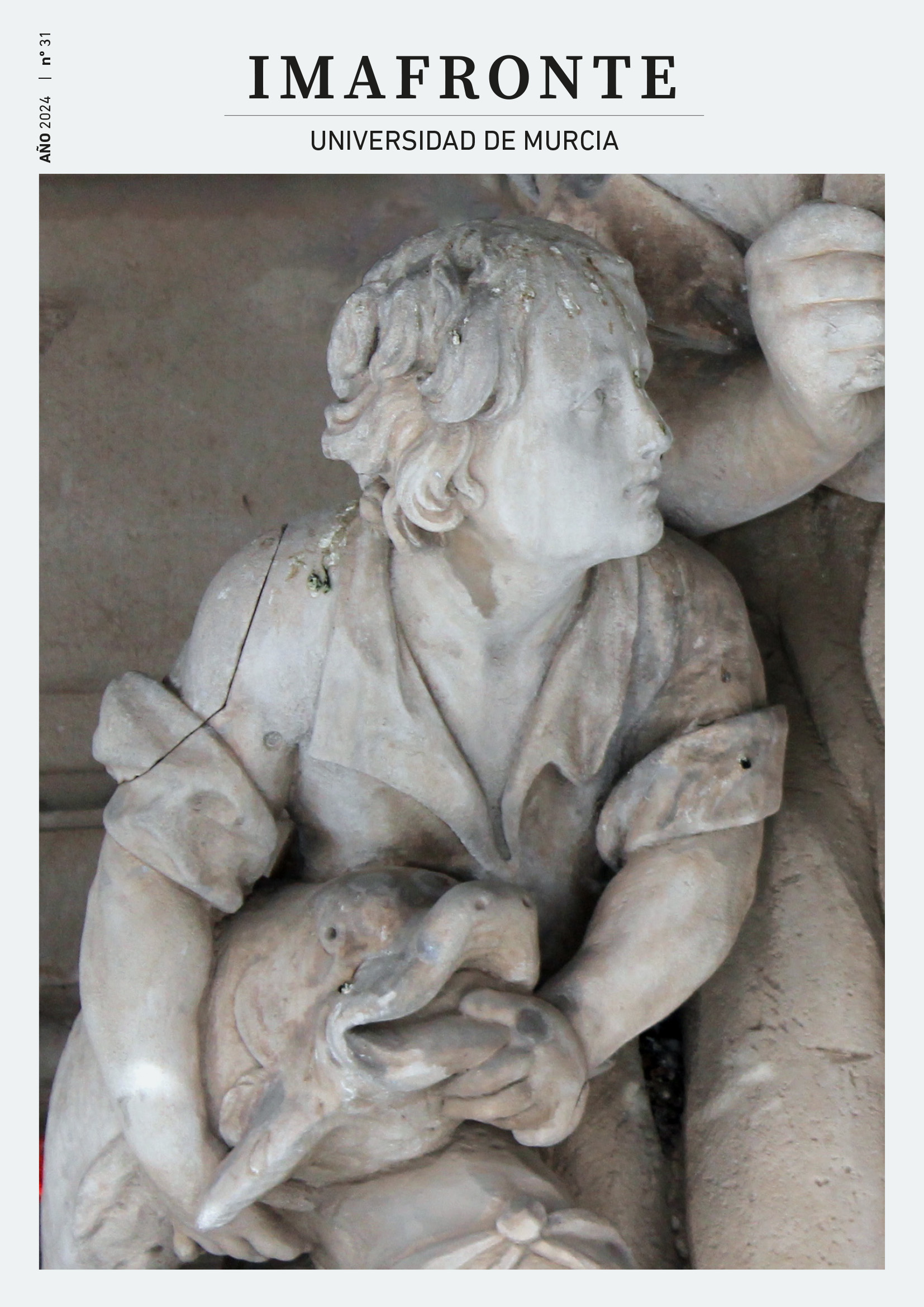Strangers in a Strange Land: The Identity of Galatian Rulers in Thrace and Anatolia at the Turn of the 3rd to the 2nd century BC
Resumen
The Gallic invasion of Greece in 280/279 BC left a deep mark in the collective memory of the Greeks. From then on, they represented the Celts as the stereotypical ‘barbarians’ – primitive, wild, violent and without any culture of their own. As the newcomers had established permanent kingdoms in Thrace and Phrygia, however, both sides had to learn how to deal with each other. The paper asks how the rulers of the Galatians on both sides of the Bosporus handled this challenge and how this influenced their own identity. To go beyond existing research, the analysis draws both on the literary Greek sources and the coinage which the Eastern Celts started to produce in the 3rd century BC. It will be shown that the Galatian elites quickly adapted to the political practices of the Hellenistic world and confidently asserted their own place within it, mixing their own customs with Greek and local (Thracian, Anatolian) elements to create a unique blend of identity.
Descargas
-
Resumen544
-
PDF283
-
EPUB126
Citas
Anastassov, J. (2011). The Celtic presence in Thrace during the 3rd century BC in the light of new archaeological data. In Guštin, M., Jevtić, M. (eds.). The Eastern Celts. The Communities between the Alps and the Black Sea. Koper-Beograd: Analles-Mediterranei, 227–239.
Armit, I. (2012). Headhunting and the Body in Iron Age Europe. Cambridge: Cambridge University Press.
Arslan, M. (2004a). Galater. Die vergessenen Kelten. Scheidegg im Allgäu: Via Verbis.
Arslan, M. (2004b). The Coins of Galatian Kingdom and the Roman coinage of Ancyra in Galatia. Ankara: Ankara Ticaret Odası.
Berger, P. (1995). La Xénophobie de Polybe. Revue des Études Anciennes, 97. 3–4, 517–525.
Bittel, K. (1974). Die Galater in Kleinasien, archäologisch gesehen. In Assimilation et résistance à la culture Gréco-Romaine dans le monde ancien. Travaux du VIe Congrès International d’Etudes Classiques – Madrid, Septembre 1974. Bucharest/Paris 1974: Editura Academiei. Les Belles Lettres, 241–249.
Burr, D. (1934). Terracottas from Myrina in the Museum of Fine Arts, Boston. Vienna: Adolf Holzhausens Nachfolger.
Cartledge, P. (1997). Introduction. In Id./Garnsey, Peter/Gruen, Erich (eds.). Hellenistic Constructs. Essays in Culture, History, and Historiography. Berkeley et al.: University of California Press, 1–19.
Champion, C. (1996). Polybius, Aetolia and the Gallic Attack on Delphi (279 BC). Historia, 45.3, 315–328.
Chaniotis, A. (2015). War in the Hellenistic World. A Social and Cultural History. Malden (MA)/Oxford/Carlton (VIC): Blackwell Publishing.
Chrubasik, B., King, D. (2017). Introduction. In Idd. (eds.). Hellenism and the Local Communities of the Eastern Mediterranean. 400 BCE—250 CE. Oxford: Oxford University Press.
Coşkun, A. (2012). Intercultural anthroponomy in Hellenistic and Roman Galatia - with maps drafted by Michael Grün and April Ross. Gephyra 9, 51–68.
Damyanov, V., Manov, M. (2013). The First Mint of Cavarus, the last King of the Celtic Kingdom in Thrace. American Journal of Numismatics 25, 11–19.
De Beaulieu, J.B. C., Fischer, B. (1998). Recueil des Inscriptions gauloises (RIG), Nr. IV. Les légen-des monétaires. Paris: CNRS Éditions.
Dembski, G. (1998). Münzen der Kelten. Sammlungskataloge des Kunsthistorischen Museums, 2. Vol. Vienna: Kunsthistorisches Museum.
D’Amato, R. (2009). Arms and Armour of the Imperial Roman Soldier. London: Pen & Sword Books.
Diedrich, B. (2022). Das Keltische Tylis in Thrakien und die Münzprägung des Kauaros. Orbis Terrarum 20, 29–72.
Draganov, D. (2005c). Coins of the Unknown Mint of Apros in Thrace. In Alfaro Asíns, C., Marcos Alonso, C., Otero Morán, P. (eds.). XIII Congreso Internacional de Numismática Madrid 2003. Madrid: Ministerio de Cultura, 339–343.
Draganov, D. (1993b). The Coinage of Cabyle. Sofia: Self-Published.
Draganov, D. (1983a). Zu den Handelsbeziehungen der thrakischen Stadt Kabyle vom 5. bis 3. Jahrhundert v. u. Z. Jahrbuch für Wirtschaftsgeschichte/Economic History Yearbook 24.2, 111–118.
Drnić, I. (2020). The Scordisci: a story from the verge of the La Tène world. In Fichtl, S., Kysela, J., Pierrevelcin, G. (eds.). Unité et diversité du monde celtique. Actes du 42e colloque international de l’Association française pour l’étude de l’âge du Fer (Prague, 10–13 mai 2018). Paris: Collection Afeaf.
Emilov, J. (2005). The Galatians and Cabyle. A fragmentary inscription and its context. In Studia Archaeologica Universitaris Serdicensis Suppl. IV, 324–332.
Erskine, A. (2013a). How to Rule the World: Polybius Book 6 Reconsidered. In Gibson, B., Harrison, T. (eds.). Polybius and his world. Essays in memory of F.W. Walbank. Oxford: Oxford University Press, 231–246.
Erskine, A. (2013b). Making Sense of the Romans. Polybius and the Greek Perspective. Dialogues d’histoire ancienne 9, 115–129.
Fischer-Bossert, W. (2005). Die Lysimacheier des Thrakers Skostokos. Revue Belge de Numismatique 151, 49–74.
Fless, F. (2002). Zur Konstruktion antiker Feindbilder – Das Beispiel der „Großen Gallier“. In Die Religion der Kelten: Fromm, Fremd, Barbarisch (Exhibition Catalogue, Leipzig. Mainz: Philipp von Zabern, 59–70.
Foulon, E. (2001). Polybes et les Celtes (II). Les Études Classiques 69, 35–64.
Frey, O.H. (1995). The Celts in Italy. In Green, M. J. The Celtic World. London/New York: Routledge, 515–532.
Gabelko, O.L. (2002). ,,Phaennis‘ Oracle“ (Zosim. II. 36–37) and Galatians‘ Passage to Asia Minor. In Olshausen, E., Sonnabend, H. (eds.). ,,Troianer sind wir gewesen“ – Migrationen in der antiken Welt. Stuttgarter Kolloquium zur Historischen Geographie des Altertums 8. Stuttgart: Franz Steiner Verlag, 211–228.
Gera, D. (1997). Warrior Women. The anonymous Tractatus de mulieribus claris in bello. Leiden: Brill.
Gerassimov, T. (1959b). Quelle est la ville où les tetradrachmes de Kauaros, roi celtique ont été frappées. Bulletin de l’Institut d’archéologie 22, 111–118.
Gerassimov, T. (1958a). The Alexandrine Tetradrachms of Cabyle in Thrace. In Ingholt, H. (ed.). Centennial Publication of the American Numismatic Society. New York: American Numismatic Society, 273–277.
Gieseke, J. (2023). Vom äußersten Westen der Welt. Die Griechische Ethnographie und die Völker Iberiens und der Keltiké im Schatten der römischen Expansion (2. Jahrhundert v. Chr. – 1. Jahrhundert n. Chr.). Stuttgart: Franz Steiner Verlag.
Girard, B. (ed.) (2013). Au fil de l'épée. Armes et guerriers en pays celte méditerranéen. Nimes: École Antique de Nîmes.
Grose, S.W. (1926). Catalogue of the McClean Collection of Greek Coins. Cambridge: Cambridge University Press.
Göbl, R. (ed.) (1974b). Pink, K. Die Münzprägung der Ostkelten und ihrer Nachbarn (2nd, revised edition). Braunschweig: Klinkhardt & Biermann.
Göbl, R. (ed.) (1974c). Pink, K. Einführung in die keltische Münzkunde mit besonderer Berücksichtigung des österreichischen Raumes (3rd, revised edition). Vienna: Franz Deuticke.
Göbl, R. (1973a). Ostkeltischer Typenatlas. Braunschweig: Klinkhardt und Biermann.
Grainger, J.D. (2020). The Galatians. Celtic Invaders of Greece and Asia Minor. Barnsley: Pen and Sword History.
Gruel, K., Popovitch, L. (2007). Les monnaies gauloises et romaines de l'oppidum de Bibracte. Glux-en-Glenne: Collection Bibracte.
Hau, L. I. (2016). Moral History from Herodotus to Diodorus Siculus. Edinburgh: Edinburgh University Press.
Head, D. (1982). Armies of the Macedonian and Punic Wars 359 BC to 146 BC. Organisation, Tactics, Dress and Weapons. Cambridge: Wargames Research Group.
Hoffmann-Salz, J. (2022). Im Land der räuberischen Nomaden? Die Eigenherrschaften der Ituraier und Emesener zwischen Seleukiden und Römern. Göttingen: Vandenhoeck & Ruprecht.
Hooker, J. (2006). S.v. Celtic coinage. In Koch, J. T. (ed.). Celtic Culture. A Historical Encyclopedia, Vol. I Celtomania–Fulup. Santa Barbara: Bloomsbury Academic, 461–464.
Hoover, O.D. (2017). Handbook of Coins of Macedon and its Neighbours. Part II: Thrace, Skythia, and Taurike. Sixth to First Centuries BC. Lancaster: Classical Numismatic Group.
Ish-Shalom, T.A. (2021). Provincial Monarchs as an Eastern Arcanum Imperii: ‘Client Kingship’, the Augustan Revolution and the Flavians. Journal of Roman Studies 111, 153–177.
Kaye, N. (2023). The Attalids of Pergamon and Anatolia. Money, Culture, and State Power. Cambridge: Cambridge University Press.
Keller, O. (ed.). (1877). Rerum Naturalium Scriptores Graeci Minores Vol. I. Leipzig: Teubner.
Kistler, E. (2009). Funktionalisierte Keltenbilder. Die Indienstnahme der Kelten zur Vermittlung von Normen und Werten in der Hellenistischen Welt. Berlin: Verlag Antike.
Kochanek, P. (2004). Die Vorstellung vom Norden und der Eurozentrismus. Eine Auswertung der patristischen und mittelalterlichen Literatur. Mainz: Philipp von Zabern.
Konrad, M. (2014). Emesa zwischen Klientelreich und Provinz. Identität und Identitätswandel einer lokalen Fürstendynastie im Spiegel der archäologischen Quellen. Rahden (Westfalia): VML Verlag Marie Leidorf.
Kostial, M. (2003). Kelten im Osten. Gold und Silber der Kelten in Mittel- und Osteuropa. Sammlung Lanz. Munich: Staatliche Münzsammlung München.
Koychev, A., Mutafov, V., Peev, I., Topalov, S. (2004). New contribution to the study of Apros city coinage, situated in the interior of Thrace during the 3rd century BC. Anali 1–4, 75–86.
Kuhrt, A., Sherwin-White, S. (1993). From Samarkhand to Sardis. A new approach to the Seleucid Empire. Berkeley/Los Angeles: University of California Press.
Lampinen, A. (2018). Against Hope? The Untimely 'Elpis' of Northern Barbarians. In Kazantzidis, G.,Spatharas, D. (eds.). Hope in Ancient Literature, History and Art (Ancient Emotions I). Berlin/Boston: De Gruyter, 275–295.
Maier, B. (2000). Die Kelten. Ihre Geschichte von den Anfängen bis zur Gegenwart. Munich: C.H. Beck.
Maier, F.K. (2012). „Überall mit dem Unerwarteten rechnen“. Die Kontingenz historischer Prozesse bei Polybios. Munich: C.H. Beck.
Manov, M. (2018). A Unique Bronze Coin of an Unknown Ruler of the Celtic Kingdom in Thrace. Pontica 18, 553–570.
Marinescu, C.A. (1996). Making and spending money along the Bosporus. The Lysimachi Coinages minted by Byzantium and Chalcedon and their socio-cultural Context. New York: PhD Thesis, Columbia University.
Melrose, R. (2016). Religion in Britain from the Megaliths to Arthur. An Archaeological and Mythological Exploration. Jefferson (NC): McFarland Books.
Monaghan, P. (2004). The Encyclopedia of Celtic Mythology and Folklore. New York: Facts on File.
Moushmov, N.A. (1912). Ancient Coins of the Balkan Peninsula. Sofia: Pechatnitsa na Grigor. Iv. Gavazov.
Nankov, E. (2015). Urbanization. In Id., Grainger, D., Valeva, J. (eds.). A Companion to Ancient Thrace. Hoboken (NJ): Wiley, 399–411.
Parachaud, K. (2019). La rencontre de l'histoire et de l'archéologie, un risque de biais méthodologique? In Perret, A., Sompayrac, L. (eds.). Questionner la rencontre en sciences humaines et sociales, actes des Journées Thématiques 2019 de l'École Doctorale 612 des Universités de Limoges et de Poitiers. Limoges: Universités de Limoges et de Poitiers, 49–61.
Péré-Noguès, S. (2013). Chiomara, Camma, et autres princesses… Une histoire des femmes dans les sociétés “celtiques” est-elle possible? Pallas. Revue d’études antiques 90, 159–176.
Peter, U. (1997). Die Münzen der thrakischen Dynasten (5.–3. Jahrhundert v. Chr.). Hintergründe ihrer Prägung. Berlin: De Gruyter.
Popović, I. (1993). Les Bijoux Monetaires de Serbie. Belgrade: National Museum Belgrade. Serbian Numismatic Society.
Price, M. J. (1991). The Coinage in the Name of Alexander the Great and Philip Arrhidaeus. A British Museum Catalogue (2 vls.). London/Zurich: The British Museum/Swiss Numismatic Society.
Psoma, S. (2008). Numismatic Evidence on the Ptolemaic Involvement in Thrace During the Second Syrian War. American Journal of Numismatics, 20, 257–263.
Quinn, J.C. (2013). Imagining the Imperial Mediterranean. In Gibson, B., Harrison, T. (eds.). Polybius and his world. Essays in memory of F.W. Walbank. Oxford: Oxford University Press, 337–352.
Rabadjiev, K. (2020). Religion. In Grainger, D., Nankov, E., Valeva, J. (eds.). A Companion to Ancient Thrace, Hoboken (NJ): Wiley, 443–456.
Le Rider, G. (1977). Le monnayage d’argent et d’or de Philippe II frappé en Macédoine de 359 à 294. Paris: E. Bourgey.
Ritchie, J. N.G., Ritchie, W.F. (1995). The army, weapons and fighting. In Green, M. (ed.). The Celtic World. London/New York: Routlege, 37–58.
Saprykin, S. (2020). The Pontic Kingdom and the Seleucids. In Oetjen, R.(ed.). New Perspectives in Seleucid History, Archaeology and Numismatics. Studies in Honor of Getzel M. Cohen. Berlin/Boston: De Gruyter, 225–239.
Strobel, K. (1991). Die Galater im hellenistischen Kleinasien: Historische Aspekte einer keltischen Staatenbildung. In Seibert, J. (ed.). Hellenistische Studien. Gedenkschrift für Hermann Bengtson. Munich: Editio Maris, 101–134.
Tomaschitz, K. (2002). Die Wanderungen der Kelten in der antiken literarischen Überlieferung. Vienna: Verlag der Österreichischen Akademie der Wissenschaften:
Urban, R. (1991). Die Kelten in Italien und in Gallien bei Polybios. In Seibert, J. (ed.). Hellenistische Studien. Gedenkschrift für Hermann Bengtson. Munich: Editio Maris, 135–158.
Vardar, L.E. (2006). Galatia Bölgesi kaleleri/yerleşmeleri yüzey araştırması: Ankara Ili 2005. Araştırma Sonuçları Toplantısı 24.2, 79–100.
Vitali, D. (2006). S.v. Bononia/Bologna. In Koch, J.T. (ed.), Celtic Culture. A Historical Encyclopedia, Vol. I A–Celtic. Santa Barbara: Bloomsbury Academic, 226–228.
Voigt, M. (2012). Human and Animal Sacrifice at Galatian Gordion. The Uses of Ritual in a Multiethnic Community. In Porter, A., Schwarz, G.M. (eds.). Sacred Killing. The Archaeology of Sacrifice in the Ancient Near East. University Park (PA): Eisenbrauns, 237–290.
Walbank, F.W. (1972). Polybius. Berkeley (et al.): University of California Press.
Williams, J.H.C. (2001). Beyond the Rubicon. Romans and Gauls in Republican Italy. Oxford: Clarendon Press.
Youroukova, Y. (1976). Coins of the Ancient Thracians. Oxford: British Archaeological Reports.
Zanker, P. (2000). Die Gegenwelt der Barbaren und die Überhöhung der häuslichen Lebenswelt. Überlegungen zum System der kaiserzeitlichen Bilderwelt. In Hölscher, T. (ed.). Gegenwelten zu den Kulturen Griechenlands und Roms in der Antike. Leipzig/Munich: K G Sauer, 409–434.
EDITIONS
Livius, Titus, Ab Urbe Condita. ed. and trans. by Müller, H.J., Weissenborn, W. (1906). Vol. 8 (Book XXXV–XXXVII), Berlin/Leipzig: Teubner.
Polybius. The Histories, 6 vol. Translated by Paton, W.R., revised by Walbank, F.W., Habicht, C. (2010–2012). Cambridge, MA: Loeb Classical Library.
Derechos de autor 2024 Julian Gieseke

Esta obra está bajo una licencia internacional Creative Commons Atribución-CompartirIgual 4.0.
Las obras que se publican en esta revista están sujetas a los siguientes términos:
1. Los autores ceden de forma no exclusiva a la revista los derechos de explotación (reproducción, distribución, comunicación y transformación).
2. Las obras que se publican en esta revista están sujetas a la licencia Attribution-ShareAlike 4.0 International (CC By SA 4.0). Por lo que se pueden copiar, usar, difundir, transmitir y exponer públicamente, siempre que:
i) se cite la autoría y la fuente original de su publicación (revista, editorial y URL de la obra), permitiendo así su reconocimiento.
ii) se permite remezclar, transfromar o crear a partir del material mientras se mantenga la misma licencia del original.
3. Condiciones de auto-archivo. Se permite y se anima a los autores a difundir electrónicamente las versiones pre-print (versión antes de ser evaluada) y/o post-print (versión evaluada y aceptada para su publicación) de sus obras antes de su publicación, ya que favorece su circulación y difusión más temprana y con ello un posible aumento en su citación y alcance entre la comunidad académica. Color RoMEO: verde.
























